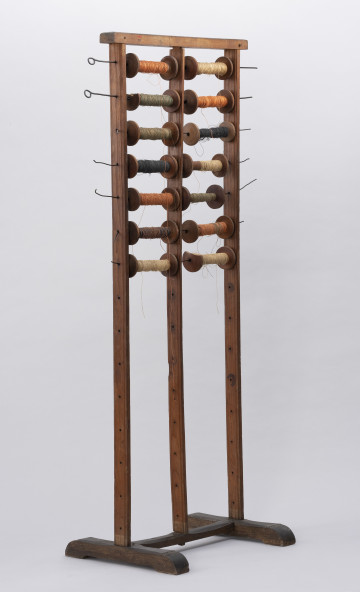
Weaving shuttle
1880 — 1920
National Museum in Szczecin
Part of the collection: Pyrzycka folk culture
A distaff is a simple tool used for spinning, i.e., twisting fibres of flax, hemp or wool into thread. It consists of a stick and a round spinning wheel on which the spun fibres, i.e., tares, were fixed and wound. Spinning consisted of pulling threads out of the spinning wheel with the left hand and winding them onto the spindle, which was set in motion by the right hand. Women did the arduous work throughout the winter. A girl who was bad at spinning was generally considered a poor candidate for a wife. In Pomerania, a spinning wheel, an attribute of femininity for centuries, was a wedding or engagement gift. In this case, it was an unusable object, decorated and painted. The present distaff is provided with the MP monogram indicating the young woman's initials and the date 1887 as the year of her wedding. The stacked decorations in Greek (isosceles) crosses, stars, tulips, birds and acorns symbolise what was necessary for the young woman setting up home: prosperity, wealth and fertility. The shape of the distaff also brings to mind the so-called tree of life, a prevalent motif in folk decorations. The tree symbolised the cosmic axis on which the world is supported. In the folk tradition, it was synonymous with the continuation of the world order. Thereby, distaff was a magical gift, which was supposed to support the moral order and the survival of the family.
Iwona Karwowska
Author / creator
Dimensions
cały obiekt: height: 63,5 cm, width: 27,5 cm
Creation time / dating
Creation / finding place
Identification number
Location / status

1880 — 1920
National Museum in Szczecin

1801 — 1939
National Museum in Szczecin

1851 — 1900
National Museum in Szczecin
DISCOVER this TOPIC
National Museum in Lublin
DISCOVER this PATH
Educational path